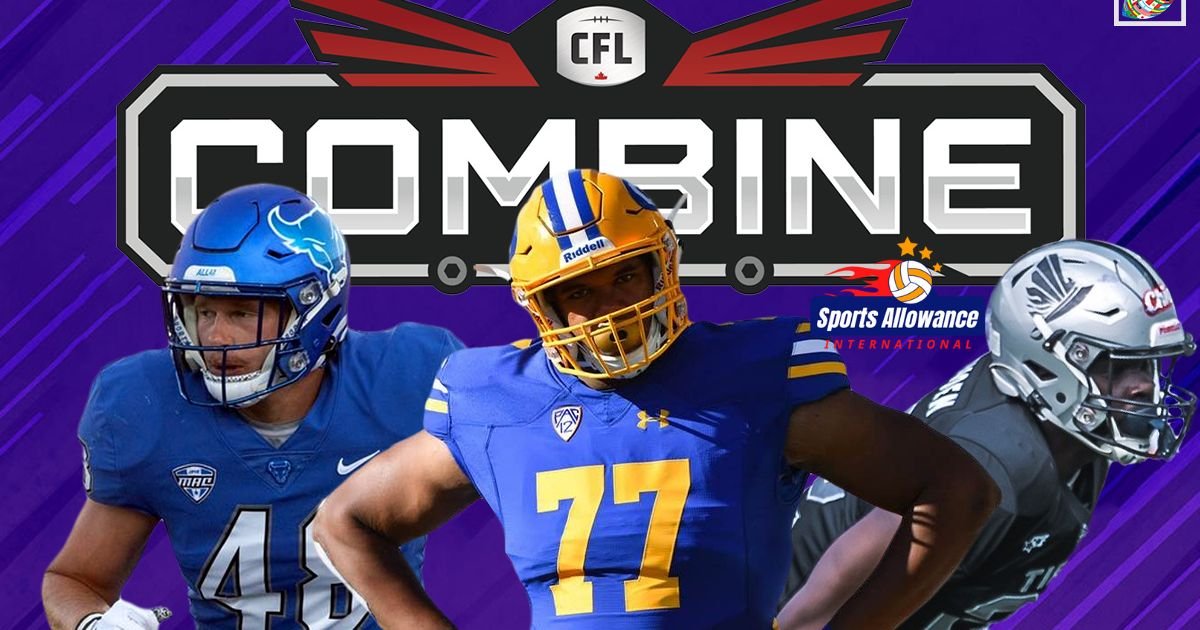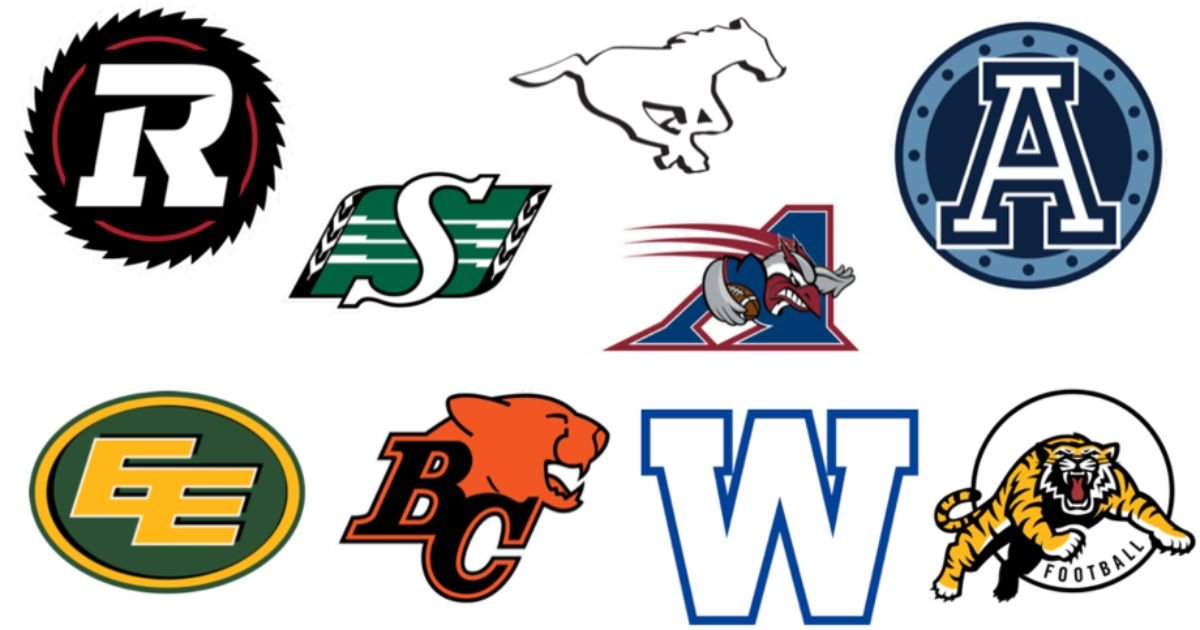Canadian football has a rich history, and its unique identity sets it apart from its American counterpart. With a storied league, dynamic players, and passionate fans, it is a sport that truly embodies the spirit of Canada. In this comprehensive guide, we’ll explore the intricacies of the game, the teams and players, and the unwavering enthusiasm surrounding the sport.
Canadian football, a beloved sport in the Great White North, combines rugby and American football elements. With its unique rules and passionate fan base, it’s no wonder that Canadian football has left an indelible mark on the sporting landscape. In this detailed article, we’ll delve into the intricacies of Canadian football, explore its league structure, discuss player salaries, and highlight critical teams. So, grab your toque, and let’s kick off!
Origins and Development
Canadian football traces its roots back to the late 19th century when it emerged as a variation of rugby football played in various universities and clubs nationwide. Over time, the game evolved, incorporating elements of American football while maintaining its distinct character.
1909 the Canadian Rugby Union (CRU) was formed, establishing rules and regulations governing the sport. This paved the way for the Canadian Football League (CFL) creation in 1958, which consolidated the existing regional leagues into a national governing body.
Read More: Ravens vs Texans

Canadian Football League (CFL) Teams
The CFL currently consists of nine teams, divided into two divisions: the East and the West. Each team represents a city or region in Canada, fostering a strong sense of local pride and identity among its fans.
East Division:
- Hamilton Tiger-Cats
- Montreal Alouettes
- Ottawa Redblacks
- Toronto Argonauts
West Division:
- BC Lions
- Calgary Stampeders
- Edmonton Elks
- Saskatchewan Roughriders
- Winnipeg Blue Bombers
These teams compete fiercely throughout the regular season, culminating in the Grey Cup. This championship game crowns the CFL champion each year.
The Canadian Football League (CFL) stands as the pinnacle of Canadian football. Comprising nine teams, each representing a city across the country, the CFL showcases top-tier talent and thrilling matchups. Let’s take a closer look at the league and its teams:
CFL Teams
- BC Lions: Based in Vancouver, British Columbia, the BC Lions have a storied history and a passionate fan base.
- Calgary Stampeders: Hailing from Calgary, Alberta, the Stampeders consistently contend for the Grey Cup.
- Edmonton Elks: Formerly known as the Eskimos, the Elks represent Edmonton, Alberta.
- Hamilton Tiger-Cats: Hamilton, Ontario, proudly hosts the Tiger-Cats, a team with a rich tradition.
- Montreal Alouettes: The Alouettes call Montreal, Quebec, their home and have a strong following.
- Ottawa Redblacks: Ottawa, Ontario, cheers for the Redblacks, a relatively new franchise.
- Saskatchewan Roughriders: The Roughriders, based in Regina, Saskatchewan, boast a passionate “Rider Nation.”
- Toronto Argonauts: Toronto, Ontario, houses the Argonauts, one of the oldest football clubs in North America.
- Winnipeg Blue Bombers: Winnipeg, Manitoba, celebrates its Blue Bombers, recent Grey Cup champions.
Rules and Gameplay
Canadian football is played on a larger field than its American counterpart, with a playing surface that measures 110 yards (100.6 meters) long and 65 yards (59.4 meters) wide. The game is played with 12 players on each side, one more than American football, and the offense has three downs (instead of four) to advance 10 yards for a first down.
Some key differences between Canadian football and American football include:
- Waggle (Motion): One backfield player can move laterally before the snap, creating additional confusion for the defense.
- Rouge: If a team kicks the ball through the end zone and it is not returned, the kicking team is awarded a single point, known as a “rouge.”
- Wider Field: The wider playing surface allows for more open, passing-oriented gameplay.
- Fair Catch: Punt returners can call for a fair catch and score a single point if the ball is not caught.
Canadian football’s unique rules and gameplay elements add excitement and strategy to the sport.
Canadian Football Players
Canadian football players are known for their athleticism, skill, and resilience. Many have become household names, inspiring a new generation of athletes to pursue their dreams.
Notable Canadian football players include:
- Doug Flutie: A legendary quarterback known for his undersized stature and exceptional mobility, Flutie played in both the CFL and the NFL, earning numerous accolades and awards.
- Ricky Ray: A prolific quarterback and Grey Cup champion, Ray holds the CFL record for most consecutive seasons with a 5,000-yard passing performance.
- Damon Allen: A quarterback who played a record 23 seasons in the CFL, Allen amassed numerous passing records and won four Grey Cup championships.
- Michael “Pinball” Clemons: A dynamic running back and coach, Clemons was known for his elusiveness and leadership on and off the field.
These players and many others have left an indelible mark on the sport, captivating audiences with skill and passion.
Salaries and Earnings
The salaries of Canadian football players may vary depending on their experience, position, and the individual team’s salary cap. While less lucrative than the NFL, CFL players can still earn a substantial income through their careers.
According to various reports, the average CFL salary ranges from $80,000 to $120,000 per season. However, some of the league’s top players can earn significantly more, with salaries reaching upwards of $500,000 annually for the most elite talent.
It’s important to note that CFL players also receive additional benefits, such as housing allowances, bonuses, and medical coverage, which can further supplement their earnings.
Grey Cup winners
| year | result | |||
|---|---|---|---|---|
| 1909 | U. of Toronto | |||
| 1910 | U. of Toronto | |||
| 1911 | U. of Toronto | |||
| 1912 | Hamilton Alerts | |||
| 1913 | Hamilton Tigers | |||
| 1914 | Toronto Argonauts | |||
| 1915 | Hamilton Tigers | |||
| 1916–19 | not held | |||
| 1920 | U. of Toronto | |||
| 1921* | Toronto Argonauts | |||
| 1922 | Queen’s University | 13 | Edmonton Eskimos | 1 |
| 1923 | Queen’s University | 54 | Regina Roughriders | 0 |
| 1924 | Queen’s University | 11 | Toronto Balmy Beach | 3 |
| 1925 | Ottawa Rough Riders | 24 | Winnipeg Blue Bombers | 1 |
| 1926 | Ottawa Rough Riders | 10 | U. of Toronto | 7 |
| 1927 | Toronto Balmy Beach | 9 | Hamilton Tigers | 6 |
| 1928 | Hamilton Tigers | 30 | Regina Roughriders | 0 |
| 1929 | Hamilton Tigers | 14 | Regina Roughriders | 3 |
| 1930 | Toronto Balmy Beach | 11 | Regina Roughriders | 6 |
| 1931 | Montreal AAA | 22 | Regina Roughriders | 0 |
| 1932 | Hamilton Tigers | 25 | Regina Roughriders | 6 |
| 1933 | Toronto Argonauts | 4 | Sarnia Imperials | 3 |
| 1934 | Sarnia Imperials | 20 | Regina Roughriders | 12 |
| 1935 | Winnipeg Blue Bombers | 18 | Hamilton Tigers | 12 |
| 1936 | Sarnia Imperials | 26 | Ottawa Rough Riders | 20 |
| 1937 | Toronto Argonauts | 4 | Winnipeg Blue Bombers | 3 |
| 1938 | Toronto Argonauts | 30 | Winnipeg Blue Bombers | 7 |
| 1939 | Winnipeg Blue Bombers | 8 | Ottawa Rough Riders | 7 |
| 1940 | Ottawa Rough Riders | ** | Toronto Balmy Beach | ** |
| 1941 | Winnipeg Blue Bombers | 18 | Ottawa Rough Riders | 16 |
| 1942 | Toronto RCAF Hurricanes | 8 | Winnipeg Blue Bombers | 5 |
| 1943 | Hamilton Flying Wildcats | 23 | Winnipeg Blue Bombers | 14 |
| 1944 | Montreal S. Hyacinthe-Donnaconna | 7 | Hamilton Wildcats | 6 |
| 1945 | Toronto Argonauts | 35 | Winnipeg Blue Bombers | 0 |
| 1946 | Toronto Argonauts | 28 | Winnipeg Blue Bombers | 0 |
| 1947 | Toronto Argonauts | 10 | Winnipeg Blue Bombers | 9 |
| 1948 | Calgary Stampeders | 12 | Ottawa Rough Riders | 7 |
| 1949 | Montreal Alouettes | 28 | Calgary Stampeders | 15 |
| 1950 | Toronto Argonauts | 13 | Winnipeg Blue Bombers | 0 |
| 1951 | Ottawa Rough Riders | 21 | Saskatchewan Roughriders | 14 |
| 1952 | Toronto Argonauts | 21 | Edmonton Eskimos | 11 |
| 1953 | Hamilton Tiger-Cats | 12 | Winnipeg Blue Bombers | 6 |
| 1954 | Edmonton Eskimos | 26 | Montreal Alouettes | 25 |
| 1955 | Edmonton Eskimos | 34 | Montreal Alouettes | 19 |
| 1956 | Edmonton Eskimos | 50 | Montreal Alouettes | 27 |
| 1957 | Hamilton Tiger-Cats | 32 | Winnipeg Blue Bombers | 7 |
| 1958 | Winnipeg Blue Bombers | 35 | Hamilton Tiger-Cats | 28 |
| 1959 | Winnipeg Blue Bombers (WFC) | 21 | Hamilton Tiger-Cats (EFC) | 7 |
| 1960 | Ottawa Rough Riders (EFC) | 16 | Edmonton Eskimos (WFC) | 6 |
| 1961 | Winnipeg Blue Bombers (WFC) | 21 | Hamilton Tiger-Cats (EFC) | 14 |
| 1962 | Winnipeg Blue Bombers (WFC) | 28 | Hamilton Tiger-Cats (EFC) | 27 |
| 1963 | Hamilton Tiger-Cats (EFC) | 21 | British Columbia Lions (WFC) | 10 |
| 1964 | British Columbia Lions (WFC) | 34 | Hamilton Tiger-Cats (EFC) | 24 |
| 1965 | Hamilton Tiger-Cats (EFC) | 22 | Winnipeg Blue Bombers (WFC) | 16 |
| 1966 | Saskatchewan Roughriders (WFC) | 29 | Ottawa Rough Riders (EFC) | 14 |
| 1967 | Hamilton Tiger-Cats (EFC) | 24 | Saskatchewan Roughriders (WFC) | 1 |
| 1968 | Ottawa Rough Riders (EFC) | 24 | Calgary Stampeders (WFC) | 21 |
| 1969 | Ottawa Rough Riders (EFC) | 29 | Saskatchewan Roughriders (WFC) | 11 |
| 1970 | Montreal Alouettes (EFC) | 23 | Calgary Stampeders (WFC) | 10 |
| 1971 | Calgary Stampeders (WFC) | 14 | Toronto Argonauts (EFC) | 11 |
| 1972 | Hamilton Tiger-Cats (EFC) | 13 | Saskatchewan Roughriders (WFC) | 10 |
| 1973 | Ottawa Rough Riders (EFC) | 22 | Edmonton Eskimos (WFC) | 18 |
| 1974 | Montreal Alouettes (EFC) | 20 | Edmonton Eskimos (WFC) | 7 |
| 1975 | Edmonton Eskimos (WFC) | 9 | Montreal Alouettes (EFC) | 8 |
| 1976 | Ottawa Rough Riders (EFC) | 23 | Saskatchewan Roughriders (WFC) | 20 |
| 1977 | Montreal Alouettes (EFC) | 41 | Edmonton Eskimos (WFC) | 6 |
| 1978 | Edmonton Eskimos (WFC) | 20 | Montreal Alouettes (EFC) | 13 |
| 1979 | Edmonton Eskimos (WFC) | 17 | Montreal Alouettes (EFC) | 9 |
| 1980 | Edmonton Eskimos (WFC) | 48 | Hamilton Tiger-Cats (EFC) | 10 |
| 1981 | Edmonton Eskimos (WFC) | 26 | Ottawa Rough Riders (EFC) | 23 |
| 1982 | Edmonton Eskimos (WFC) | 32 | Toronto Argonauts (EFC) | 16 |
| 1983 | Toronto Argonauts (EFC) | 18 | British Columbia Lions (WFC) | 17 |
| 1984 | Winnipeg Blue Bombers (WFC) | 47 | Hamilton Tiger-Cats (EFC) | 17 |
| 1985 | British Columbia Lions (WFC) | 37 | Hamilton Tiger-Cats (EFC) | 24 |
| 1986 | Hamilton Tiger-Cats (EFC) | 39 | Edmonton Eskimos (WFC) | 15 |
| 1987 | Edmonton Eskimos (WFC) | 38 | Toronto Argonauts (EFC) | 36 |
| 1988 | Winnipeg Blue Bombers (EFC) | 22 | British Columbia Lions (WFC) | 21 |
| 1989 | Saskatchewan Roughriders (WFC) | 43 | Hamilton Tiger-Cats (EFC) | 40 |
| 1990 | Winnipeg Blue Bombers (EFC) | 50 | Edmonton Eskimos (WFC) | 11 |
| 1991 | Toronto Argonauts (EFC) | 36 | Calgary Stampeders (WFC) | 21 |
| 1992 | Calgary Stampeders (WFC) | 24 | Winnipeg Blue Bombers (EFC) | 10 |
| 1993 | Edmonton Eskimos (WFC) | 33 | Winnipeg Blue Bombers (EFC) | 23 |
| 1994 | British Columbia Lions (WFC) | 26 | Baltimore Stallions (EFC) | 23 |
| 1995 | Baltimore Stallions (SD) | 37 | Calgary Stampeders (ND) | 20 |
| 1996 | Toronto Argonauts (ED) | 43 | Edmonton Eskimos (WD) | 37 |
| 1997 | Toronto Argonauts (ED) | 47 | Saskatchewan Roughriders (WD) | 23 |
| 1998 | Calgary Stampeders (WD) | 26 | Hamilton Tiger-Cats (ED) | 24 |
| 1999 | Hamilton Tiger-Cats (ED) | 32 | Calgary Stampeders (WD) | 21 |
| 2000 | British Columbia Lions (WD) | 28 | Montreal Alouettes (ED) | 26 |
| 2001 | Calgary Stampeders (WD) | 27 | Winnipeg Blue Bombers (ED) | 19 |
| 2002 | Montreal Alouettes (ED) | 25 | Edmonton Eskimos (WD) | 16 |
| 2003 | Edmonton Eskimos (WD) | 34 | Montreal Alouettes (ED) | 22 |
| 2004 | Toronto Argonauts (ED) | 27 | British Columbia Lions (WD) | 19 |
| 2005 | Edmonton Eskimos (WD) | 38 | Montreal Alouettes (ED) | 35 |
| 2006 | British Columbia Lions (WD) | 25 | Montreal Alouettes (ED) | 14 |
| 2007 | Saskatchewan Roughriders (WD) | 23 | Winnipeg Blue Bombers (ED) | 19 |
| 2008 | Calgary Stampeders (WD) | 22 | Montreal Alouettes (ED) | 14 |
| 2009 | Montreal Alouettes (ED) | 28 | Saskatchewan Roughriders (WD) | 27 |
| 2010 | Montreal Alouettes (ED) | 21 | Saskatchewan Roughriders (WD) | 18 |
| 2011 | British Columbia Lions (WD) | 34 | Winnipeg Blue Bombers (ED) | 23 |
| 2012 | Toronto Argonauts (ED) | 35 | Calgary Stampeders (WD) | 22 |
| 2013 | Saskatchewan Roughriders (WD) | 45 | Hamilton Tiger-Cats (ED) | 23 |
| 2014 | Calgary Stampeders (WD) | 20 | Hamilton Tiger-Cats (ED) | 16 |
| 2015 | Edmonton Eskimos (WD) | 26 | Ottawa Redblacks (ED) | 20 |
| 2016 | Ottawa Redblacks (ED) | 39 | Calgary Stampeders (WD) | 33 |
| 2017 | Toronto Argonauts (ED) | 27 | Calgary Stampeders (WD) | 24 |
| 2018 | Calgary Stampeders (WD) | 27 | Ottawa Redblacks (ED) | 16 |
| 2019 | Winnipeg Blue Bombers (WD) | 33 | Hamilton Tiger-Cats (ED) | 12 |
| 2020 | not held | |||
| 2021 | Winnipeg Blue Bombers (WD) | 33 | Hamilton Tiger-Cats (ED) | 25 |
| 2022 | Toronto Argonauts (ED) | 24 | Winnipeg Blue Bombers (WD) | 23 |
| *East-West playoff began in 1921. | ||||
| **Ottawa won the two-game total-point series 8–2 and 12–5. | ||||
Passionate Fan Culture
Canadian football enjoys a dedicated and passionate fan base across the country. From the iconic “13th Man” of the Winnipeg Blue Bombers to the raucous crowds at McMahon Stadium in Calgary, fans play a crucial role in creating an electrifying atmosphere at every game.
Tailgating is a beloved tradition among CFL fans, with supporters gathering in parking lots before games to socialize, grill food, and prepare for the excitement that lies ahead. These pre-game festivities foster a sense of community and camaraderie among fans.

The CFL has also embraced new technology to enhance the fan experience in recent years. Many teams now offer mobile apps that provide real-time updates, live streaming, and exclusive content, allowing fans to stay connected to their favorite teams wherever they are.
Canadian Football vs. American Football
While Canadian football and American football share many similarities, several key differences set the two sports apart:
- Number of Downs: Canadian football allows three downs to gain 10 yards, while American football has four downs.
- Field Dimensions: The Canadian field is broader and longer, allowing for more open gameplay.
- Number of Players: Canadian football has 12 players on the field, while American football has 11.
- Fair Catch and Rouge: The fair catch and the ability to score a single point (rouge) are unique to Canadian football.
These distinctions create a more passing-oriented game in Canadian football, emphasizing open-field play and strategic kicking. While both sports are exciting, Canadian football offers a unique twist on the traditional American game.
Canadian Football Rules
Canadian football has its own rules, distinct from its American counterpart. Some key differences include:
- Field Dimensions: The field measures 110 yards long and 65 yards wide.
- Downs: Teams have three downs to advance the ball ten yards.
- Scoring: Touchdowns (6 points), field goals (3 points), and singles (1 point) contribute to the score.
- Rouge: If a kicked ball lands in the opponent’s end zone without being returned, the kicking team earns a single point.
How Much Do Canadian Football Players Make?
While CFL salaries don’t rival the NFL’s, players still earn respectable incomes. The salary cap for each team in 2021 was $5.3 million, resulting in average player salaries ranging from $60,000 to $100,000 per season. Notable exceptions include star players who command higher pay due to exceptional performance.
Here are some top earners:
- Kienan LaFrance (Saskatchewan Roughriders): $80,000
- William Powell (Saskatchewan Roughriders): $82,000
- Ka’Deem Carey (Calgary Stampeders): $82,200
- Brendan Gillanders (Ottawa Redblacks): $82,500
Canadian Football vs. American Football
Canadian and American football share origins but diverge in gameplay. The CFL’s wider field, unique scoring system, and emphasis on passing set it apart. Meanwhile, the NFL remains dominant regarding global recognition and financial clout.
Canadian Football Live
Catch the CFL action live! Whether at the stadium or watching from home, the excitement of Canadian football is unmatched.
Canadian Football News
Stay informed with the latest news, player updates, and game highlights. Follow your favorite teams and players as they chase the Grey Cup.
Live Games and Coverage
Canadian football fans can enjoy live games through various platforms, including traditional television broadcasts, online streaming, and in-person stadium attendance.
Significant networks in Canada, such as TSN and RDS, provide comprehensive coverage of CFL games, offering live broadcasts, analysis, and commentary throughout the season. Many teams also have dedicated radio stations that broadcast games, providing an alternative way for fans to follow their favorite teams.
For those who prefer a more immersive experience, attending live games at CFL stadiums is a popular option. From the crowd’s roar to the palpable energy on the field, watching a game in person is an unforgettable experience for any fan.
Canadian Football News and Updates
Staying up-to-date with the latest Canadian football news is essential for any dedicated fan. Various media outlets and platforms provide comprehensive coverage of the league, teams, and players, ensuring fans never miss a beat.
Major news websites, such as TSN.ca and Sportsnet.ca, offer extensive coverage of CFL news, including game recaps, player interviews, trade rumors, and in-depth analysis. Many teams also have dedicated beat writers who provide insights and behind-the-scenes access to their respective franchises.
Social media platforms like Twitter and Instagram have also become valuable resources for Canadian football news. Teams, players, and media personalities often share real-time updates, insights, and exclusive content, keeping fans engaged and informed throughout the season.
The Future of Canadian Football
As Canadian football continues evolving, the sport faces challenges and opportunities. Attracting and retaining top talent, expanding the league’s reach, and maintaining a solid fan base are all crucial for the sport’s long-term success.
The CFL has taken strides to address some of these challenges, including initiatives to promote player safety, enhance the fan experience, and explore potential expansion opportunities. The league has also embraced new technologies, such as virtual reality and interactive apps, to engage with fans innovatively.
Additionally, the growth of grassroots programs and youth development initiatives has helped to cultivate the next generation of Canadian football players, ensuring a steady pipeline of talent for the future.
As the sport continues to captivate audiences across Canada and beyond, the future of Canadian football remains bright, with new generations of fans and players poised to carry on the rich tradition of this beloved sport.
Thrilling World of Canadian Football
As we delve deeper into the exciting world of Canadian football, it’s essential to understand the unique aspects that define the sport. From iconic rivalries and historic moments to the evolution of gameplay and technology, Canadian football continues to captivate audiences nationwide and beyond.
Historic Rivalries and Legendary Players
The CFL has been home to some of the most intense rivalries in professional sports. These fierce competitions have contributed to the league’s rich history and have helped shape the game we know and love today.
Iconic Rivalries
- Hamilton Tiger-Cats vs. Toronto Argonauts: The “Labour Day Classic” between these two Ontario teams is one of the most heated rivalries in Canadian football. With a history dating back to 1873, these two teams have battled for bragging rights in the province for over a century.
- Calgary Stampeders vs. Edmonton Elks: The “Battle of Alberta” is a fierce rivalry that transcends sport. These two teams have been competing for provincial supremacy since the 1940s, with each victory carrying immense significance for their passionate fan bases.
- Winnipeg Blue Bombers vs. Saskatchewan Roughriders: The “Banjo Bowl” is a long-standing rivalry between these two prairie teams. The games are often played in front of sold-out crowds, with fans from both sides creating an unmatched electric atmosphere in Canadian sports.
Legendary Players
Throughout the history of Canadian football, numerous players have left an indelible mark on the game. Their skill, determination, and passion have inspired generations of fans and athletes.
- Doug Flutie: A true legend of the game, Flutie’s accomplishments in both the CFL and NFL have cemented his status as one of the greatest players ever. His ability to make plays with his arm and his legs made him a fan favorite wherever he played.
- Damon Allen: Allen’s longevity and consistency are unmatched in professional football. His 23-year career in the CFL saw him break numerous records and win four Grey Cup championships. He is widely regarded as one of the greatest quarterbacks in CFL history.
- Michael “Pinball” Clemons: Clemons’ elusiveness and ability to break tackles earned him the nickname “Pinball.” His leadership and sportsmanship on and off the field made him a beloved figure in Canadian football. Clemons later became a successful coach, leading the Toronto Argonauts to two Grey Cup victories.
- Anthony Calvillo: Calvillo’s skills as a quarterback were unparalleled. He holds numerous CFL passing records, including most career passing yards and most career touchdown passes. Calvillo’s ability to read defenses and make accurate throws made him one of the most dominant players in the game’s history.
These legendary players and countless others have left an indelible mark on Canadian football and have inspired a new generation of athletes to strive for greatness.
Evolution of Gameplay and Strategy
As with any sport, Canadian football has undergone significant changes and evolutions. These changes have not only impacted how the game is played but also influenced the strategies employed by coaches and players alike.
Rule Changes
One of the most significant changes in Canadian football occurred in the 1970s when the league introduced the “waggle” rule. This rule allowed one backfield player to move laterally before the snap, creating additional confusion for the defense. This rule change led to a more open and passing-oriented game as teams began to exploit this new wrinkle in the offense.

In the 1990s, the CFL introduced the “no-yards” penalty, designed to discourage excessive contact on defenseless receivers. This rule change helped to improve player safety. It encouraged a more wide-open style of play, as teams could pass more freely without fear of excessive defensive contact.
Offensive and Defensive Strategies
The evolution of gameplay in Canadian football has also led to changes in offensive and defensive strategies. As teams have become more adept at passing the ball, defensive coordinators have had to adapt their schemes to counter these potent offenses.
On the offensive side, teams have begun to employ more complex passing concepts and formations. Pre-snap motion and misdirection have become increasingly common as coordinators look to create mismatches and exploit defensive weaknesses.
Defensively, teams have started to use more defensive backs and hybrid linebackers to counter the passing game. The use of zone coverages and disguised looks have become more prevalent as teams look to confuse opposing quarterbacks and force turnovers.
As the game continues to evolve, coaches and players must stay ahead of the curve, adapting their strategies and tactics to match the ever-changing landscape of Canadian football.
Incorporating Technology and Analytics
In recent years, Canadian football has embraced technology and analytics to enhance the fan experience and improve the game. From advanced data tracking systems to immersive virtual reality experiences, the CFL and its teams have been at the forefront of innovation.
Player Tracking and Analytics
One of Canadian football’s most significant technological advancements has been implementing player tracking systems. These systems use advanced sensors and cameras to track player movement, speed, and positioning on the field. Coaches and analysts then use this data to evaluate player performance, identify areas for improvement, and develop game plans.
Analytics have also become an essential tool in Canadian football. Teams now employ advanced statistical analysis to evaluate player performance, identify trends, and make informed decisions about roster construction and game strategy.
Fan Engagement and Virtual Reality
Canadian football teams have also embraced technology to enhance the fan experience. Many teams now offer mobile apps that provide real-time updates, live streaming, and exclusive content, allowing fans to stay connected to their favorite teams wherever they are.
Virtual reality (VR) has also become an essential tool for fan engagement. Several CFL teams have started to offer VR experiences that allow fans to experience the game from a player’s perspective. These immersive experiences have been a hit with fans, giving them a unique way to connect with the sport they love.
Canadian football teams must stay ahead of the curve as technology advances, incorporating new technologies and innovations to provide fans with the best possible experience.
Community Outreach and Grassroots Development
One of the most important aspects of Canadian football is its connection to the community. From youth development programs to charitable initiatives, the CFL and its teams have made a concerted effort to give back to the communities that support them.
Youth Development Programs
The future success of Canadian football relies on the development of young players. To this end, the CFL and its teams have invested heavily in youth development programs. These programs allow young players to learn the fundamentals of the game, develop their skills, and receive mentorship from experienced coaches and players.
Many teams also offer scholarship programs and financial assistance to help promising young players pursue their dreams of playing at the highest level. These programs help develop the next generation of Canadian football players and serve as a source of inspiration for young people across the country.
Community Outreach and Charitable Initiatives
Canadian football teams have also significantly impacted their communities through various outreach and charitable initiatives. From food drives and toy drives to hospital visits and youth mentorship programs, teams have embraced their role as community leaders and have worked to make a positive difference in the lives of those around them.
These initiatives not only help to support those in need but also serve to strengthen the bond between teams and their fans. By giving back to the community, teams have fostered a sense of loyalty and connection that transcends the game itself.
The Grey Cup: Canada’s Biggest Sporting Event
The Grey Cup is the pinnacle of Canadian football. It celebrates the sport, its players, and its fans. The game itself is a spectacle, but the events surrounding it have become a cultural phenomenon that brings the entire country together.
The Grey Cup Festival
The Grey Cup is more than just a game; it is a week-long celebration of Canadian football and culture. Each year, the host city transforms into a hub of activity, with concerts, parties, and other events taking place in the lead-up to the big game.
The Grey Cup Festival allows fans nationwide to unite and celebrate their love of the sport. It is a time for reunions, tailgating, and creating memories that will last a lifetime.
The Grey Cup Parade
One of the most iconic events of the Grey Cup Festival is the Grey Cup Parade. This annual tradition sees the two teams competing in the championship game; marching bands and floats make their way through the streets of the host city.
The parade allows fans to support their team and soak in the event’s atmosphere. It is a celebration of the sport and its history and a reminder of Canadian football fans’ passion and dedication to their teams.
The Game Itself
Of course, the centerpiece of the Grey Cup is the game itself. The championship game culminates a season’s worth of hard work and dedication. It is the ultimate test of skill and determination.
The atmosphere inside the stadium is electric, with fans from both teams cheering on their respective sides. The game is a battle of wills, with players leaving everything on the field to pursue the ultimate prize.
As the final seconds tick off the clock and the confetti rains down on the field, the winning team is crowned the champion of Canadian football. It is a moment that is etched into the memories of fans and players alike, and it is a reminder of the power and passion that Canadian football can inspire.
Challenges and Opportunities for the Future
As with any sport, Canadian football faces its share of challenges and opportunities as it looks to the future. From expanding its reach and attracting new fans to addressing player safety and financial sustainability issues, the CFL and its teams must be proactive and forward-thinking to ensure the game’s long-term success.
Expanding the Reach of Canadian Football
One of Canadian football’s biggest challenges is expanding its reach beyond the traditional fan base. While the sport has a loyal following in many parts of the country, there are still large swaths of the population that have yet to be exposed to the excitement and passion of the game.
To address this challenge, the CFL and its teams must invest in marketing and outreach efforts targeting new demographics and regions. This could involve partnering with local organizations and businesses, creating engaging digital content, and exploring new avenues for broadcasting games and events.
Player Safety and Sustainability
Player safety is a top priority for the CFL and its teams. As the sport continues to evolve and become more physical, steps must be taken to protect the health and well-being of players.
This could involve exploring new technologies and equipment that can help reduce the risk of injury and implementing rules and regulations that prioritize player safety. The league must also ensure that players can access the best possible medical care and support services during and after their careers.
In addition to player safety, the financial sustainability of the CFL and its teams is a critical issue. The league must attract new sponsors and investors while exploring new revenue streams and business models that can help support the sport’s long-term growth.
By addressing these challenges head-on, Canadian football can position itself for continued success and growth in the years to come.
Read More: Canadian Football
The Future of Canadian Football
As we look to the future of Canadian football, it is clear that the sport has a bright and exciting road ahead. With a rich history, passionate fan base, and a commitment to innovation and growth, the CFL and its teams are well-positioned to continue captivating audiences for years.
One of the most promising aspects of the future of Canadian football is the potential for growth and expansion. As the sport gains popularity and attracts new fans, there may be opportunities to add new teams and expand the league’s footprint nationwide.
Additionally, the continued investment in youth development programs and grassroots initiatives will help to ensure a steady pipeline of talent for years to come. By nurturing young players and providing them with the resources and support they need to succeed, the CFL can help cultivate the next generation of stars and keep the sport thriving for decades.
Finally, the ongoing embrace of technology and innovation will be critical to the future success of Canadian football. From advanced analytics and player tracking systems to immersive virtual reality experiences and innovative fan engagement platforms, the sport must evolve and adapt to stay ahead of the curve.
As we look ahead, one thing is sure: Canadian football will continue to captivate audiences and inspire passion and loyalty in fans nationwide. With its rich history, dynamic gameplay, and commitment to growth and innovation, the future of the sport is brighter than ever.

In conclusion, Canadian football embodies passion, tradition, and a distinct brand of athleticism. So, next time you hear the crowd roar, remember that it’s more than just a game—it’s Canadian football!










